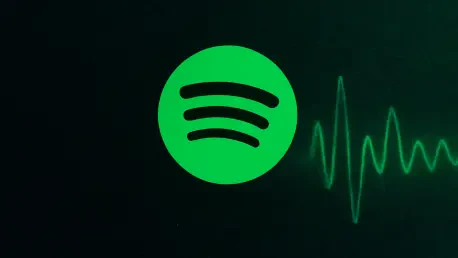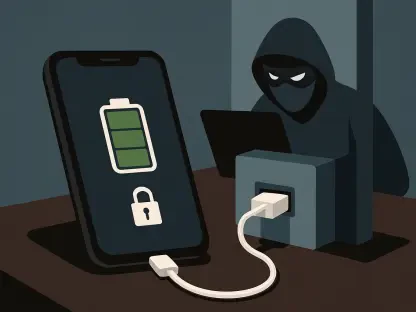I’m thrilled to be speaking with Oscar Vail, a renowned technology expert whose insights into emerging fields like quantum computing, robotics, and open-source projects have made him a trusted voice in the industry. Today, we’re diving into the exciting world of audio streaming, focusing on the recent rollout of Spotify Lossless. In this conversation, we’ll explore how this upgrade enhances audio quality, its availability across regions and devices, the technical nuances behind its implementation, and what users need to know about data usage and setup. Let’s get started with Oscar’s expert perspective on this game-changing development.
How did you first react to the announcement of Spotify Lossless, and what does this rollout mean for the streaming industry?
I was genuinely excited when Spotify finally confirmed the rollout of Lossless. It’s been a long time coming, and for audiophiles and casual listeners alike, it’s a significant step forward. This move signals a broader shift in the streaming industry toward prioritizing audio quality, something competitors have already been pushing for. It’s not just about catching up; it’s about making high-fidelity audio accessible to a wider audience, which could redefine how we experience music on streaming platforms.
Can you break down the current availability of Spotify Lossless and what users in different regions can expect over the coming weeks?
Absolutely. Spotify Lossless has already started rolling out to Premium users in select regions like the US, UK, Germany, Japan, and several others. The plan is to expand to over 50 countries by the end of October, which is ambitious but promising. However, Spotify hasn’t yet shared the complete list of regions, likely due to logistical or partnership considerations. For users in unannounced areas, I’d expect periodic updates from Spotify, and it’s worth keeping an eye on their official channels for the latest on timing and availability in your region.
What makes Spotify Lossless stand out in terms of audio quality, and how does it measure up to other platforms in the market?
Spotify Lossless offers streaming at up to 24-bit/44.1 kHz in FLAC format, which is a notch above CD-quality, typically defined as 16-bit/44.1 kHz. That’s a noticeable improvement for anyone with decent audio gear. However, when you compare it to platforms like Apple Music or Tidal, which can hit up to 24-bit/192 kHz, Spotify’s offering doesn’t quite reach those peaks. I think this is a strategic choice—balancing quality with accessibility and data efficiency. Not everyone has the hardware or bandwidth for ultra-high resolutions, so Spotify seems to be targeting a sweet spot for the majority of listeners.
How does Spotify Lossless integrate with various devices, and what role does technology like Spotify Connect play in this?
Spotify Lossless is supported on mobile, tablet, and desktop platforms, provided you’ve got the right equipment to appreciate the quality. Spotify Connect is a key feature here—it lets you seamlessly play Lossless audio on compatible devices like speakers from Sony, Bose, or Samsung. It’s essentially a bridge that ensures high-quality playback across your ecosystem. Support for Amazon and Sonos devices is slated for next month, which will broaden the reach. It’s a smart way to make sure users aren’t limited by hardware constraints right out of the gate.
Why hasn’t Bluetooth caught up to support Lossless audio yet, and what advancements might we need to see for that to happen?
The issue with Bluetooth is primarily bandwidth. Current Bluetooth technology, even with advanced codecs, struggles to transmit uncompressed, lossless audio without significant compression, which defeats the purpose. Spotify has noted this limitation, and while codecs like aptX Lossless are emerging, they’re not widely adopted yet. We’ll need broader hardware support and updates to Bluetooth standards—perhaps in the next generation of devices—to handle the data rates required for true lossless streaming over wireless connections. It’s a technical hurdle, but one I expect to see tackled in the next couple of years.
For users eager to try Spotify Lossless, can you walk us through how to get started with enabling this feature?
Sure, it’s pretty straightforward, though it’s not automatic. Unlike some competitors, Spotify doesn’t set Lossless as the default, so you’ll need to enable it manually. Open the Spotify app, tap your profile icon in the top left, and go to Settings and Privacy. From there, find Media Quality, and you’ll see the Lossless option alongside other settings for WiFi, cellular, and downloads. Select it, and you’re good to go. I think Spotify’s decision to keep it optional reflects an understanding that not all users want or need the highest quality, especially if data or storage is a concern.
Speaking of data, what should users be aware of when it comes to streaming with Spotify Lossless, particularly if they’re on limited plans?
Data usage is definitely something to watch. Streaming with Spotify Lossless can consume around 1GB per hour, which adds up quickly if you’re listening a lot, especially on cellular networks. For users with limited data plans or slower connections, this could mean hitting caps or experiencing buffering issues. My advice is to use Lossless primarily on WiFi or download tracks for offline listening if you’re concerned about data. Spotify’s kept other quality tiers for a reason—flexibility matters.
What is your forecast for the future of lossless audio in streaming services like Spotify over the next few years?
I’m optimistic about where lossless audio is headed. With Spotify joining the fray, we’re likely to see a ripple effect—more platforms prioritizing high-fidelity options and pushing hardware manufacturers to support better audio standards. Over the next few years, I expect lossless to become a baseline for premium tiers across most services, with innovations in compression and wireless tech making it more accessible. Spotify’s rollout is just the beginning; I think we’ll see them refine their offering, possibly even inching closer to competitors’ max resolutions as user demand grows and technology evolves.









